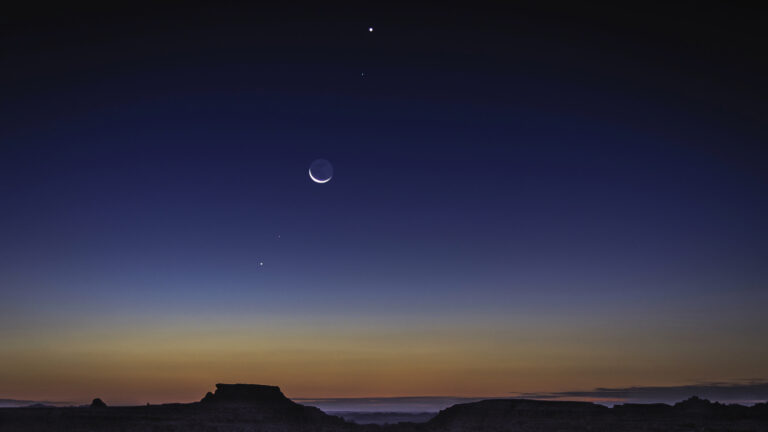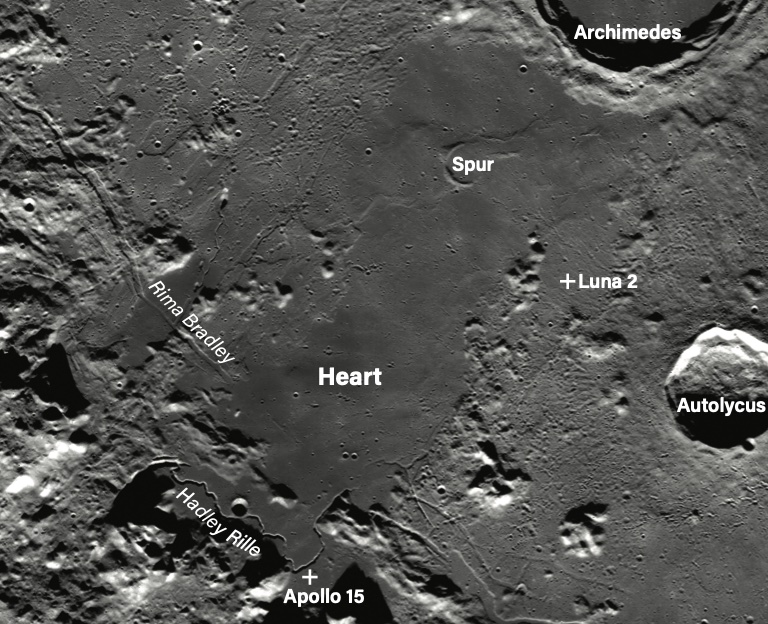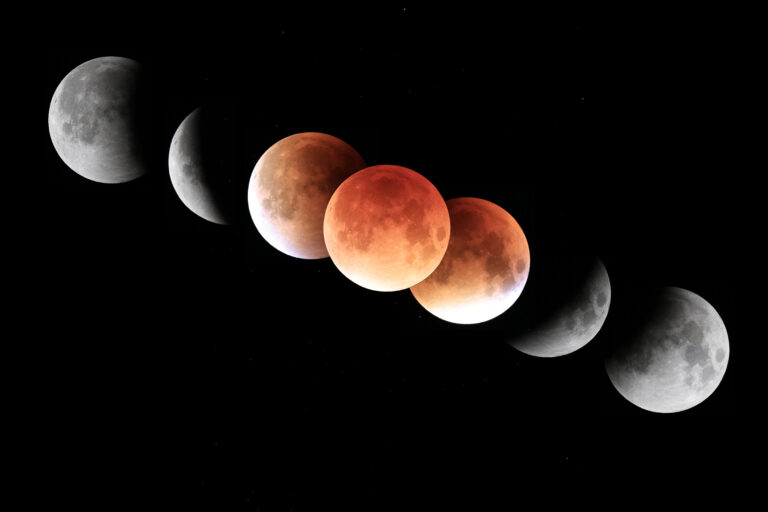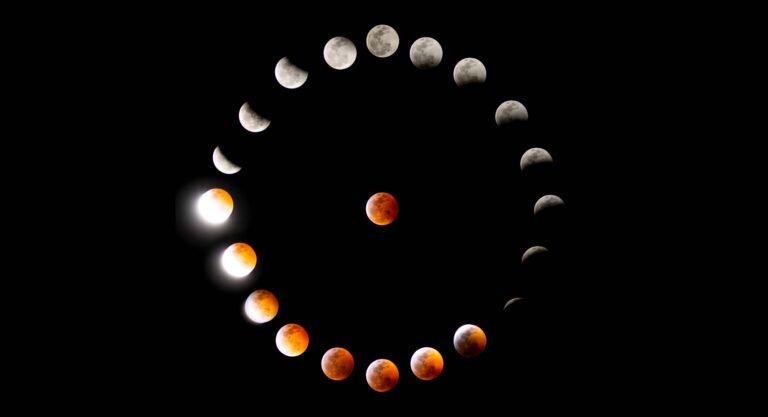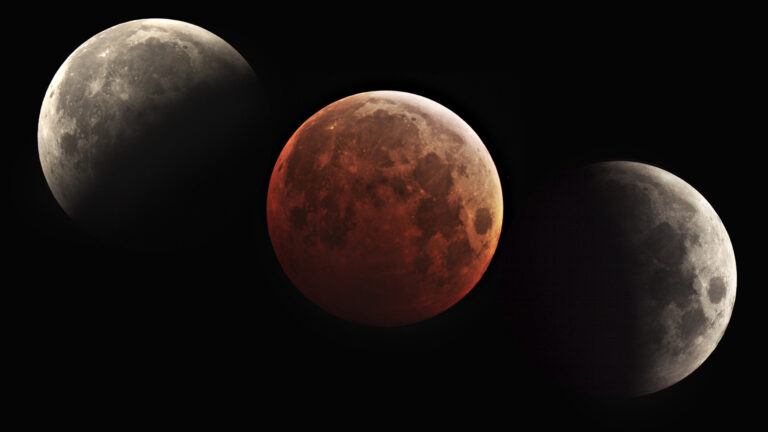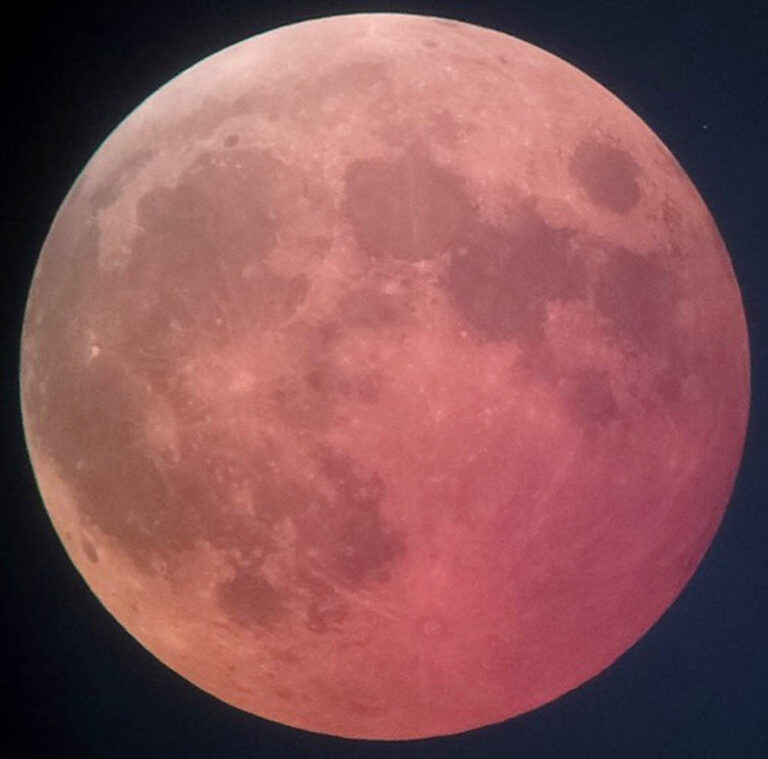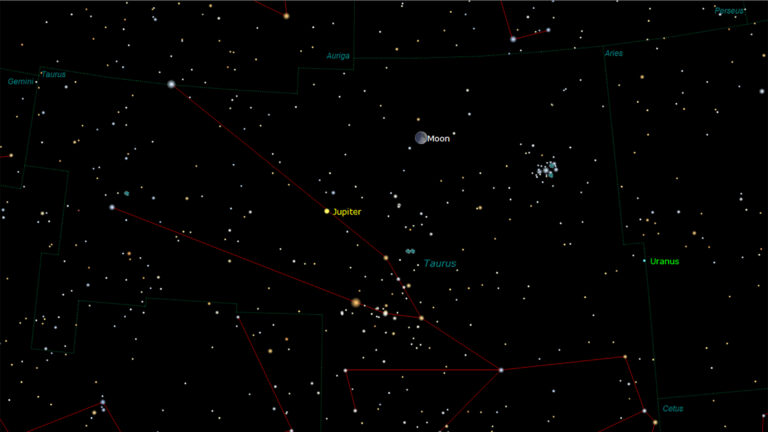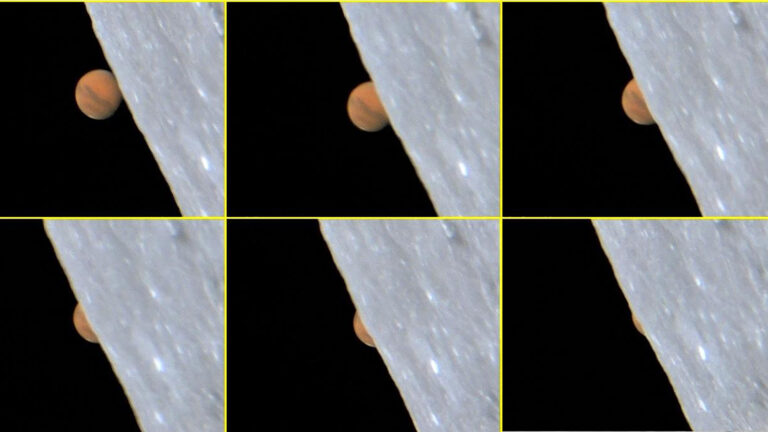Key Takeaways:
I looked at the image. It wasn’t. The X that I described is the one associated with the crater Werner, located near the lunar meridian about a third of the way up from the lunar south pole and visible for only a few hours around First Quarter Moon. The X that Edmonds found is close to the crater Mutus near the lunar south pole and is observable for several consecutive evenings after Full Moon. He had stumbled upon it while “strolling” around a 19-day-old Moon with a 10-inch Schmidt-Cassegrain telescope and imaging equipment.
Mutus is in an area littered by craters like dimples on a golf ball. To find the Mutus X, I’d need to crater-hop much the way I star-hop when seeking a deep-sky object in a star-rich region. Fortunately, Edmonds had included a whole Moon image that pinpointed its position.
On the evening of September 22, 2013, 4½ days after Full Moon, I tried my luck. Starting with the prominent three-crater chain formed by Theophilus, Cyrillus, and Catharina, I jumped to the crater Fracastorius on the southern shore of the Sea of Nectar and then to Piccolomini farther south. A southeastward jaunt from Piccolomini brought me to the huge crater Janssen and then, with a southward turn, to a crater group surrounding Hommel. Continuing the southerly drift finally brought me to the crater Mutus and, just below it, the X.
Without the chart, I doubt I would have found the Mutus X. Barely half the size of Jupiter’s disk, it was just visible through my 4.5-inch reflector at 150x and still appeared small in a 10-inch reflector at 208x. Its image contorted by atmospheric turbulence, it was indeed a challenge to capture!
Now it’s your turn to discover the Mutus X. The labeled guide on this page, taken from Edmond’s all-Moon photo, retraces the path I took from Theophilus to the X. Conduct your search a few days after Full Moon when the terminator (the dividing line between night and day on the lunar surface) reaches the eastern edges of the Sea of Tranquillity and the Sea of Nectar. Make the crater-hop with low power, and then switch to high magnification (100x or more).
Once you’ve spotted the Mutus X, be sure to look a little farther south to another interesting feature Edmonds encountered. “By the same strolling method that netted the X,” Edmonds relates, “this guy’s face popped out at me. This one was quite startling considering I was not expecting it. A bit comical when you get used to it.”
This miniature “Man in the Moon” is formed by the craters Simpelius and Simpelius A (the eyes) and Schomberger (the mouth). Between the eyes and mouth, shadows in a small crater create nostrils.
Last July, three days after Full Moon, I checked out the Mutus X and then looked for the face. Even with low magnification, it was easily visible. The smile was wider than that in the image Edmonds sent (shown above), stretching into adjacent Schomberger C and creating a wide troll-like grin. The following night, the mouth was limited to just Schomberger Crater, becoming the silly grin Edmonds had imaged — from troll to droll in a single evening!
His experience leads Edmonds to surmise, “I’m sure there are other real and imaginary objects to be found on the Moon.” There are! As the terminator drifts east to west across our satellite’s surface, dozens of clair-obscur (literally, light and shadow) features come and go. For an extensive list, log on to www.the-moon.wikispaces.com/clair-obscur.
Questions, comments, or suggestions? Email me at [email protected]. Next month: The LVAS Observer’s Challenge! Clear skies!




